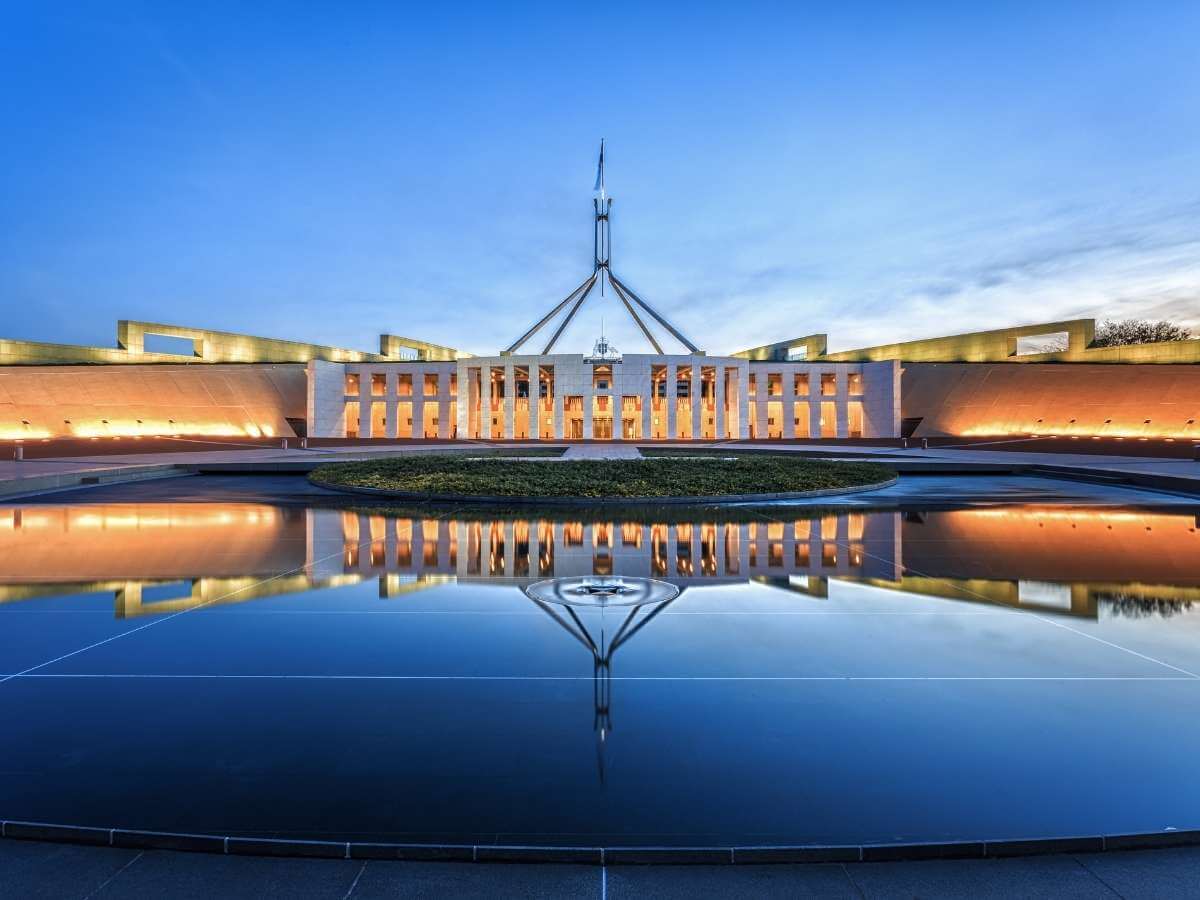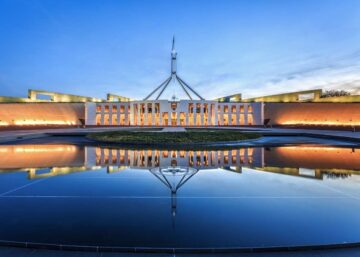Shuffling the decks: 2022-23 Federal Budget
There is nothing in this Budget that would create a UK style crisis. The stage 3 tax cuts legislated to commence on 1 July 2024 are not mentioned, and most funding initiatives appear to be a reallocation of previous Government initiatives. And, the commodity driven $54.4 billion improvement in tax receipts has largely been banked, not spent.
With seven months before the 2023-24 Budget released in May 2023, this Budget is a shuffling of the deck not a new set of cards. And to continue the pun, we need to play the hand we have been dealt, buffeted by externalities – war, floods, and global uncertainty.
Cost of living pressures will continue. While some initiatives such as the increase to child care subsidies will help, the Budget flags some fairly bracing economic expectations:
- Inflation expected to peak at 7.75% in the December quarter and will persist at higher rates for longer than expected before easing to 3.5% by June 2024.
- Real GDP is forecast to grow to 3.25% in 2022-23 then retract to 1.5% in 2023-24.
- Electricity prices are expected to increase nationally by an average of 20% in late 2022, with retail electricity prices expected to rise by a further 30% in 2023-24.
- The deficit sits at $36.9bn, while this is better than originally estimated, the deficit expands to $49.5bn by 2025-26.
Tight labour market conditions are expected to see annual wage growth pick up to 3.75% by June 2023. Even so, high inflation is expected to see real wages fall over 2022-23 before rising slightly over 2023-24. That is, your wages might increase but the gains will be eaten away by the increasing cost of living.
The ATO gets an extra $80m to extend its personal income tax compliance program, with $674m anticipated in increased receipts and over $80m in increased payments as a result. Tax deductions will be looked at closely.
As expected, multi-nationals are a target. New measures will limit opportunities to shift taxable profits offshore. And, the ATO’s Tax Avoidance Taskforce is expected to deliver a whopping $2.8bn in additional tax receipts and $1.1bn in payments over the 4 year period.
If we can assist you to take advantage of any of the Budget measures, or to protect your position, please let us know.
As always, we’re here if you need us!
Individuals and families
Child Care Subsidy increase
From 2022-23
As previously announced, the maximum Child Care Subsidy (CCS) rate will increase from 85% to 90% for families earning less than $80,000. Subsidy rates will then taper down one percentage point for each additional $5,000 in income until it reaches zero per cent for families earning $530,000.
The current higher CCS rates for families with multiple children aged 5 or under in child care will be maintained, with higher CCS rates to cease 26 weeks after the older child’s last session of care, or when the child turns 6 years old.
In addition, from 2022-23, a base entitlement to 36 hours per fortnight of subsidised early childhood education and care will be implemented for families with First Nations children, regardless of activity hours or income level.
The CCS increase also comes with a renewed focus on industry compliance requiring large providers to publicly report CCS related revenue and profits. In addition, the way the Child Care Subsidy is managed will change, requiring the electronic payment of early childhood education and care gap fees to weed out fraudulent claims for care not received.
Paid parental leave reforms
From 1 July 2023 and 1 July 2024
As previously announced, from 1 July 2023 the Government will introduce reforms to make the Paid Parental Leave Scheme flexible for families so that either parent is able to claim the payment and both birth parents and non-birth parents are allowed to receive the payment if they meet the eligibility criteria. Parents will also be able to claim weeks of the payment concurrently so they can take leave at the same time.
Eligibility will also be expanded with the introduction of a $350,000 family income test, which families can be assessed under if they do not meet the individual income test.
From 1 July 2024, the Government will begin expanding the scheme from the current 18 weeks by two additional weeks a year until it reaches a full 26 weeks from 1 July 2026.
Both parents will be able to share the leave entitlement, with a proportion maintained on a “use it or lose it” basis, to encourage and facilitate both parents to access the scheme and to share the caring responsibilities more equally. Sole parents will be able to access the full 26 weeks.
Encouraging pensioners back into the workforce
From 2022-23
Age and veterans pensioners will be able to work and earn more before their pension is reduced. The Government is providing a one-off $4,000 credit to their Work Bonus income bank.
The temporary income bank top-up will increase the amount pensioners can earn in 2022–23 from $7,800 to $11,800, before their pension is reduced, supporting pensioners who want to work or work more hours to do so without losing their pension.
The Work Bonus increases the amount an eligible pensioner can earn from work before it affects their pension rate. Under the current rules, the first $300 of fortnightly income from work is not assessed and is not counted under the pension income test. The Work Bonus operates in addition to the pension income test free area.
When the work bonus is not used in a fortnight it accumulates in an income bank where the standard maximum is $7,800. This allows pensioners who work on an ad hoc basis to not be disadvantaged compared to those with regular fortnightly income.
Aged care reform
As previously announced, $2.5bn will be provided over 4 years to improve the quality of aged care in residential aged care facilities by requiring all facilities to have a registered nurse onsite 24 hours per day, 7 days a week from 1 July 2023 and increasing care minutes to 215 minutes per resident per day from 1 October 2024.
The reforms also enable the Government to cap charges that approved providers of home care (home care providers) may charge care recipients and removes the ability of home care providers to charge exit amounts.
Additional funding for floods and natural disasters
An additional $51.5m has been provided to support communities impacted by natural disasters through the Australian Government Disaster Recovery Payments (AGDRP), Disaster Recovery Allowance (DRA) and other payments made under the Disaster Recovery Funding Arrangements.
As previously announced, $2.5bn will be provided over 4 years to improve the quality of aged care in residential aged care facilities by requiring all facilities to have a registered nurse onsite 24 hours per day, 7 days a week from 1 July 2023 and increasing care minutes to 215 minutes per resident per day from 1 October 2024.
The reforms also enable the Government to cap charges that approved providers of home care (home care providers) may charge care recipients and removes the ability of home care providers to charge exit amounts.
Lifting the income limit on Seniors Health Card
As previously announced, the income test limits will be increased for access to the Commonwealth Seniors Health Card (CSHC). The CSHC provides subsidised pharmaceuticals and other medical benefits for self-funded retirees that have reached aged pension age.
The income test captures adjusted taxable income plus deeming on account-based pensions unless grandfathered under the pre-1 July 2015 rules. The CSHC is not asset tested.
| Current ($ per annum) | New ($ per annum) | |
| Single | $61,284 | $90,000 |
| Couples combined | $98,054 | $144,000 |
Legislation enabling the increase is before Parliament.
The Government will also freeze social security deeming rates at their current levels for a further two years until 30 June 2024.
Income support asset test extended on proceeds of sale of main residence
As previously announced, the Government is:
- Extending the assets test exemption for principal home sale proceeds from 12 months to 24 months for income support recipients, and
- Changing the income test, to apply only the lower deeming rate (0.25%) to principal home sale proceeds when calculating deemed income for 24 months after the sale of the principal home.
The exemptions apply until the income support recipient acquires another main residence or the 24-month period expires. The Bill enabling the extension is currently before Parliament.
Total and permanent incapacity payments to veterans
From 2022-23
The Special Rate of Disability Compensation Payment, Temporary Special Rate Payment, and the Special Rate Disability Pension for veterans will increase by $1,000 per year.
Community batteries for household solar
From 2022-23
The Government will provide $224.3m over 4 years from 2022-23 to deploy 400 community batteries across Australia.
A related solar initiative will see an additional $102m committed to establish a Community Solar Banks program for the deployment of community-scale solar and clean energy technologies. This initiative is aimed at regional communities, social housing, apartments, rental accommodation, and households that are traditionally unable to access rooftop solar.
Superannuation and investors
Change to taxation of off-market share buy-backs by listed companies
From 7.30pm AEDT, 25 October 2022
From Budget night, 7:30pm AEDT, 25 October 2022, the Government intends to align the tax treatment of off-market share buy-backs undertaken by listed public companies with the treatment of on-market buy-backs. The result is expected to deliver a saving of $550m.
An on-market buy-back is when a listed company buys its shares back on the stock exchange. All other buy-backs are treated as off-market buy-backs.
Under the current rules, when a company undertakes an off-market buy-back it is necessary to consider which portion of the proceeds is taxed as a dividend and which portion is taxed under the CGT rules. Franking credits can potentially be attached to the dividend component.
On the other hand, when a listed company undertakes an on-market buy-back the full proceeds are generally taxed under the CGT rules and franking credits cannot be passed onto the shareholders.
Off-market buy-backs potentially offer a tax advantage to low-taxed shareholders such as superannuation funds. It appears that the Government has become concerned that the difference in the tax treatment between on-market and off-market buy-backs has been exploited inappropriately.
The Budget measure only refers to listed public companies which presumably means that the current tax treatment for off-market buy-backs undertaken by private companies and public companies that are not listed will continue to apply.
While this measure is yet to legislated, with a Budget night implementation date, this could have an immediate tax impact on the treatment of new off-market share buy-backs.
‘Downsizer’ eligibility reduced to 55
As previously announced, the Government will reduce the age an individual can make a ‘downsizer’ contribution to superannuation from the current 60 years to 55 years of age.
Currently, eligible individuals aged 60 years or older can choose to make a ‘downsizer contribution’ into their superannuation of up to $300,000 per person ($600,000 per couple) from the proceeds of selling their home.
Downsizer contributions can be made from the sale of your principal residence in Australia that you have owned for the past ten or more years. These contributions are excluded from the age test, work test, and your total superannuation balance (but not exempt from your transfer balance cap).
Legislation enabling the expanding eligibility for downsizer contributions is currently before Parliament.
Delayed: Relaxation of SMSF residency requirements
The 2021-22 Budget announced that the residency rules for Self-Managed Superannuation Funds (SMSFs) and small APRA regulated funds (SAFs) will be relaxed by extending the central control and management test safe harbour from two to five years for SMSFs, and removing the active member test for both fund types.
This measure was due to commence from 1 July 2022. The Government has announced that it will defer the start date to the income year commencing on or after the date of Royal Assent of the enabling legislation.
Scrapped: 3 year SMSF audit requirement
Back in the 2018-19 Budget the Government announced that SMSFs with a history of good record-keeping and compliance – that is, three consecutive years of clear audit reports and annual returns lodged on time, will only be required to have their fund audited every three years.
The Government has now officially announced that this measure will not be proceeding.
Cryptocurrency not a foreign currency
As previously flagged, the Government will legislate to clarify that digital currencies such as Bitcoin will continue to be excluded from the Australian income tax treatment of foreign currency. The exclusion does not apply to digital currencies issued by, or under the authority of, a government agency, which continue to be taxed as foreign currency.
Business and employers
Removed: Self-assessment of intangible assets
Announced in the 2021-22 Budget and due to commence on 1 July 2023, the measure enabling taxpayers to self-assess the effective life of certain intangible assets, rather than being required to use the effective life currently prescribed by statute, has been removed.
The measure was to apply to assets acquired from 1 July 2023 including patents, registered designs, copyrights and in-house software.
Dramatic jump in penalties for competition and consumer law breaches
From 2022-23 financial year
The penalties for a corporation breaching competition and consumer laws will increase sharply from a maximum of $10m to a maximum of $50m per breach, and from 10% of annual turnover to 30% of turnover (whichever is greater) during the period the breach took place.
Energy efficiency grants for SMEs
From 2022-23 financial year
The Government will provide $62.6m over 3 years from 2022-23 to help small and medium business fund energy efficient equipment upgrades. The funding will support studies, planning, equipment and facility upgrade projects that will improve energy efficiency, reduce emissions or improve the management of power demand. No details of the grants are currently available.
Delayed: Ridesharing reporting requirements
In the 2019-20 Mid Year Economic and Fiscal Outlook (MYEFO), new reporting measures were announced requiring sharing economy online platforms to report identification and income information on participating sellers to the ATO for data matching purposes. These measures have now been delayed from:
- 1 July 2022 to 1 July 2023 for transactions relating to the supply of ride sourcing and short-term accommodation, and
- 1 July 2023 to 1 July 2024 for all other reportable transactions (including but not limited to asset sharing, food delivery and tasking-based services).
Government and regulators
ATO targets in sharp focus
1. Personal income tax deductions and incorrect reporting
The ATO will receive an additional $80.3 to crackdown on non-compliance including:
- Overclaiming deductions; and
- Incorrect reporting of income
The spend is expected to increase tax receipts by $674.4m and payment by $80.3m over 4 years.
2. Cash payments and tax evasion by business
The ‘shadow economy’, cash-in-hand payments including underpayment of wages, visa fraud, and other nefarious activity that deprives the economy of the income from tax receipts, will come under scrutiny with the extension of the ATO’s Shadow Economy Program for a further 3 years from 1 July 2023. Over this period, the program is estimated to increase tax receipts by $2.1bn and payments by $685.2m over the 4 years from 2022-23.
3. Multinational business and the Tax Avoidance Taskforce
The ATO’s Tax Avoidance Taskforce will receive an additional $200m over 4 years from 1 July 2022 primarily to pursue multinational enterprises and large public and private businesses. This taskforce is expected to deliver a whopping $2.8bn in additional tax receipts and $1.1bn in payments over the 4 year period.
$3.6bn cut from external labour, advertising, travel and legal expenses
The Government has committed to saving $3.6bn by cutting what it spends on external labour, advertising, travel and legal expenses
Infrastructure projects
The Budget has reallocated infrastructure projects, “reprofiling” $6.5bn in funding for existing projects. An additional $8.1bn over the next 10 years has been earmarked for priority projects including:
ACT
- $85.9m for the Canberra Light Rail Stage 2A project
New South Wales
- $1.4bn including $500m for planning, corridor acquisition and early works for the Sydney to Newcastle High Speed Rail, $268.8m for the New England Highway – Muswellbrook Bypass and $110m for the Epping Bridge
Northern Territory
- $550m including $350m to seal the Tanami Road and Central Arnhem Road
Queensland
- $2.1bn including $866.4m for the Bruce Highway, $400.0m for the Inland Freight Route (Mungindi to Charters Towers) upgrades, $400.0m for Beef Corridors and $210.0m for the Kuranda Range Road upgrade
South Australia
- $460m including $400m for the South Australian component of the Freight Highway Upgrade Program.
Tasmania
- $78m for projects in Tasmania, including $48.0 million for the Tasmanian Roads Package
Victoria
- $2.6bn including $2.2bn for the Suburban Rail Loop East
Western Australia
- $634.8m including $400.0 million for the Alice Springs to Halls Creek Corridor upgrade and $125m for electric bus charging infrastructure in Perth
National
- $18m to establish the High Speed Rail Authority to plan, develop, coordinate, oversee and monitor the construction and operation of the high speed rail network.
Other announcements
Working with our Pacific Neighbours
Australia’s relationship in the Pacific has come into sharp focus of late. The Budget implements a series of initiatives to support development and labour mobility in the region:
- Additional infrastructure investment of $500m over 10 years in the Pacific and Timor-Leste will be provided through the Australian Infrastructure Financing Facility for the Pacific including an additional $50m for the establishment of a Pacific Climate Infrastructure Financing Partnership Facility.
- As previously announced, the Pacific Australia Labour Mobility scheme will be expanded to improve the benefits of the program for employers and workers including:
- underwriting employers’ investment in upfront travel costs for seasonal workers by covering costs that cannot be recouped from workers
- improvements to workplace standards for PALM visa holders, including increased workplace compliance activities
- allowing primary visa holders on long-term placements to bring partners and children to Australia, where sponsored by employers, with additional social support including providing relevant minimum family assistance payments, with an initial rollout of 200 families
- the expansion of the existing aged care skills pilot programs for aged care workers.
- A new Pacific Engagement Visa for nationals of Pacific Island countries and Timor-Leste. Up to 3,000 additional places will be made available in addition to those provided through the existing permanent Migration Program.
Electric vehicle and hydrogen refuelling
As part of its Driving the Nation Fund, the Government will commit:
- $146.1m over 5 years from 2023-24 for the Australian Renewable Energy Agency to co-invest in projects to reduce emissions from Australia’s road transport sector
- $89.5m over 6 years from 2022-23 for the Hydrogen Highways initiative to fund the creation of hydrogen refuelling stations on Australia’s busiest freight routes, in partnership with states and territories, including $5.5m to LINE Hydrogen Pty Ltd for its George Town green hydrogen heavy transport project
- $39.8m over 5 years from 2022-23 to establish a National Electric Vehicle Charging Network to deliver 117 fast charging stations on highways across Australia, in partnership with the NRMA.
Broadband and mobile improvements for regional Australia
Almost $758m will be spent improving mobile and broadband connectivity in rural and regional Australia.
Foreign investment review board fees increase
The Government has increased foreign investment fees and will increase financial penalties for breaches that relate to residential land. Fees doubled on 29 July 2022 for all applications made under the foreign investment framework. The maximum financial penalties that can be applied for breaches in relation to residential land will also double on 1 January 2023.
Community sector organisations funding boost
An additional $560m over 4 years will be provided to community sector organisations ($140m pa). 46% of the funding will come from the Department of Social Services and around 34% to the National Indigenous Australians Agency.
Extension of tariffs on Russian goods
An additional $560m over 4 years will be provided to community sector organisations ($140m pa). 46% of the funding will come from the Department of Social Services and around 34% to the National Indigenous Australians Agency.
Snapshot of the economy
The Government appear keenly aware of the economic balancing act taking place, keeping the budget predominantly to election promises and redirecting existing initiatives to avoid exacerbating inflationary pressures. As the Treasurer said “Australians know this is a time of great challenge and change.”
The global economic environment has sharply deteriorated. Inflation has risen rapidly across
advanced economies. The Russian invasion of Ukraine has significantly driven up global energy costs and exacerbated the impact of poor weather on global food prices. All of this impacts on Australia. Here are the highlights:
GDP – Real GDP is forecast to grow by 3¼ per cent in 2022-23 before slowing to 1½ per cent in 2023-24, as cost of living pressures and rising interest rates increasingly weigh on household disposable income and consumption.
The Government warn that with the highly uncertain global economic outlook, there are significant risks that could cause a sharper slowdown in domestic activity. Globally, key risks include a ‘hard landing’ or recession across major advanced economies, a sharper-than-expected downturn in China due to COVID-19 outbreaks and the property market downturn, a sudden tightening in financial market conditions and further energy price shocks stemming from the Russian invasion of Ukraine, which could drive inflation even higher.
And domestically, the full impact of recent floods is highly uncertain as the situation continues to develop.
Inflation – forecast to peak at 7¾ per cent in the December quarter of 2022. Supply disruptions have resulted in large price increases in home building, fuel and energy. Food prices remain elevated and have been further exacerbated by recent floods. Some of these pressures are expected to persist into 2023. Inflation is expected to remain elevated at 5¾ per cent over 2022-23 and 3½ per cent over 2023–24 before gradually easing and returning to within the Reserve Bank’s inflation target by 2024-25.
Deficit – lower the originally estimated at $36.9bn. However, the deficit is expected to climb to over $51bn by 2024-25 with the impact of higher inflation on indexed payments for services, the NDIS in particular.
Gross debt – is close to one trillion dollars and is at the highest level as a share of GDP in over 70 years.
Tax receipts – revised up by $54.4bn in 2022-23 and $142.0 billion over the 4 years to 2025-26.
Unemployment and wages growth – labour market conditions are expected to remain tight. The unemployment rate is forecast to rise to 4½ per cent by the June quarter of 2024.
Tight labour market conditions are expected to see annual wage growth pick up to 3¾ per cent by June 2023. However, high inflation is expected to see real wages fall over 2022-23 before rising slightly over 2023-24.
Energy – Electricity and gas prices are expected to rise sharply over the next 2 years, as the cost of energy market disruptions are passed through to households. Treasury has assumed retail electricity prices will increase by an average of 20% nationally in late 2022. Retail electricity prices are expected to rise by a further 30% in 2023-24.
Domestic gas prices remain more than double their average prior to Russia’s invasion of Ukraine. Retail prices are expected to increase by up to 20% in 2022-23 and 2023-24.
Electric vehicle and hydrogen refuelling
As part of its Driving the Nation Fund, the Government will commit:
- $146.1m over 5 years from 2023-24 for the Australian Renewable Energy Agency to co-invest in projects to reduce emissions from Australia’s road transport sector
- $89.5m over 6 years from 2022-23 for the Hydrogen Highways initiative to fund the creation of hydrogen refuelling stations on Australia’s busiest freight routes, in partnership with states and territories, including $5.5m to LINE Hydrogen Pty Ltd for its George Town green hydrogen heavy transport project
- $39.8m over 5 years from 2022-23 to establish a National Electric Vehicle Charging Network to deliver 117 fast charging stations on highways across Australia, in partnership with the NRMA.
Broadband and mobile improvements for regional Australia
Almost $758m will be spent improving mobile and broadband connectivity in rural and regional Australia.
Foreign investment review board fees increase
The Government has increased foreign investment fees and will increase financial penalties for breaches that relate to residential land. Fees doubled on 29 July 2022 for all applications made under the foreign investment framework. The maximum financial penalties that can be applied for breaches in relation to residential land will also double on 1 January 2023.
Community sector organisations funding boost
An additional $560m over 4 years will be provided to community sector organisations ($140m pa). 46% of the funding will come from the Department of Social Services and around 34% to the National Indigenous Australians Agency.
Extension of tariffs on Russian goods
An additional $560m over 4 years will be provided to community sector organisations ($140m pa). 46% of the funding will come from the Department of Social Services and around 34% to the National Indigenous Australians Agency.
Further help:
If you have any questions about how the Federal Budget will affect you or your business, we are happy to work through it with you.
To organise a meeting, contact Marsh & Partners on 07 3023 4800 or at mail@marshpartners.com.au.
Copyright © Knowledge Shop Pty Ltd. October 2022







